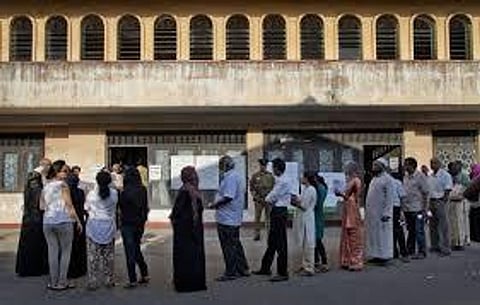
- Home
- न्यूजग्राम
- India
- World
- Politics
- Entertainment
- Culture
- Lifestyle
- Economy
- Sports
- Sp. Coverage
- Misc.
- NewsGram Exclusive
- Jobs / Internships

By Anurag Dey
Kolkata, Did Netaji Subhas Chandra Bose die of third-degree burns on August 18, 1945, after his plane crashed in Formosa (now Taiwan) or did he survive and escape to Siberia? Or was the "'crash"'a mere hoax to help him flee to safety? The questions have been haunting, agitating and engaging Indians, in particular Bengalis, for 70 years, but the mystery endures even today.
A section of Netaji's descendants, including his daughter Anita Pfaff, as also some Indian National Army (INA) veterans, hold that the revolutionary leader perished in the accident and his ashes have been interred at Tokyo's Renkoji temple.
But a large number of Netaji's admirers, researchers and family members don't buy the theory.
During her visit to Kolkata in 2013, Pfaff said she was convinced that he died when the Mitsubishi Ki-21 Japanese heavy bomber Netaji boarded at Saigon with his close aide Col. Habibur Rahman on August 17, 1945, purportedly to shift base to the erstwhile Soviet Union and continue his fight for India's independence, crashed in Japanese-occupied Formosa.
"It would be the perfect homecoming for him if the ashes are brought to India. His ashes should be immersed in the river Ganges," Pfaff had said.
Netaji's grand nephew and Harvard University professor Sugata Bose is another big votary of the crash theory and has detailed his viewpoint in his book 'His Majesty's Opponent'. Bose bases his arguments on "overwhelming evidence", citing the testimony of six of the seven survivors of the crash as also that of doctors and paramedics who treated Netaji at the Taipei Military Hospital.
The Indian government's three attempts to unravel the mystery by constituting probe panels – Shah Nawaz Khan Committee (1956), G D Khosla Committee (1970) and the Justice M K Mukehrjee Commission which submitted its report in 2006 have only fueled the debate.
While the first two panels concluded Bose perished in the Taipei crash, the Mukherjee Commission debunked the theory. The government however debunked the Mukherjee Commission's findings.
Researcher and author Anuj Dhar stands by the Mukherjee Commission.
"Both to the Mukherjee Commission as well as in letters written to me, the Taiwan authorities have stated that according to their records, no plane crash occurred on Aug 18, 1945".
"There are many secret files that can prove the air crash theory was planted by the Japanese and Netaji to facilitate his escape to Russia."
Lakshmi Sahgal, nee Swaminathan, who led the all-woman Rani Jhansi Regiment of the INA, supported the crash theory.
She claimed in an interview in 2005 that the Japanese had destroyed all records before their surrender after losing the second World War.
"As far as the Taiwan government's denial of any air crash during that period on its soil is concerned, all I can say is that the Japanese had destroyed all records. They did not want one bit of paper to fall into the hands of the Allied forces that could prove as evidence for wartime crimes.," Sahgal had said.
The answer to the enigma, many believe, lies hidden in scores of secret government files.
Besides Dhar and his Mission Netaji, a host of Netaji's descendants have been demanding publication of over 100 such files claimed to be in possession of various departments of the central government including the Prime Minister's Office (PMO) and 64 classified documents with the West Bengal government.
"All information on record – from Indian, Japanese, British and Taiwanese sources – is unambiguous that the man who died in the Nanmon military hospital in Taihoku (Taipei) in August 1945 was a Japanese soldier named Ichiro Okura," said Dhar.
Netaji's grand-nephew Chandra Kumar Bose concurred.
"There are several secret Japanese government dossiers that are lying with the Indian government where Okura has been named. Okura's name appears in the official records accessed by various authorities.
Col. Rahman, a survivor of the alleged crash, recounting the last hours of Netaji Bose before the Shah Nawaz panel, affirmed he died at a hospital after the crash. But Dhar and Chandra Kumar claim Col. Rahman was only following Netaji's orders.
"Colonel Rahman's interrogation reports, declassified in 1997, clearly state that he had not told the truth. In fact, in close quarters including the Bose family, he had confided that he did so following Netaji's orders," said Dhar.
Netaji's elder brother Sarat Chandra Bose had questioned Col. Rahman and rejected his crash theory.
"Sarat Chandra Bose rejected Col. Rahman's crash theory after questioning for hours," Chandra Kumar said, quoting his father and Sarat Bose's son Amiya Nath.
Besides, Sarat Bose had also come across American intelligence reports saying Netaji safely reached Manchuria in China bordering the USSR.
"Justice Radha Binode Pal of the International Military Tribunal for the Far East had told Sarat Bose about American intelligence report that was shown to him by an American judge at the tribunal. The report clearly stated that Netaji safely reached Manchuria on August 18, 1945," Chandra Kumar maintained.
(IANS)
